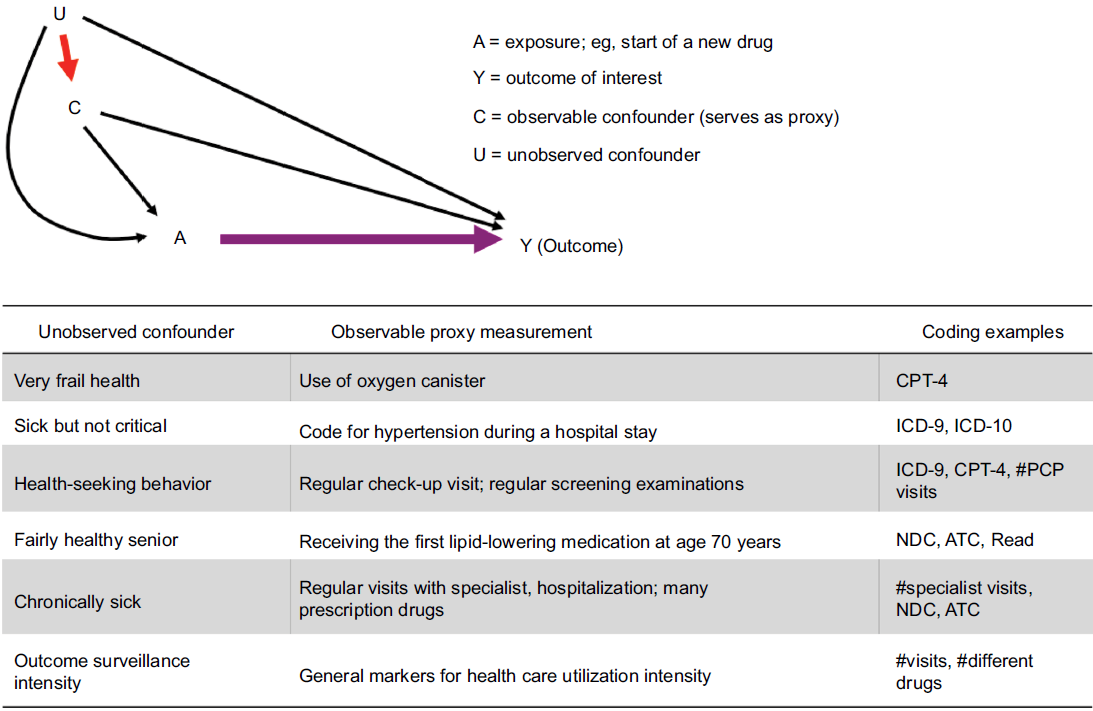High-dimensional Propensity score
Origin

Key idea
Schneeweiss et al. 2009 extended to a variety of classifications to code diagnoses (ICD), procedure (CPT), medications (eg, NDC, AHFS, ATCC), or others (PCP, LOINC).

CPT-4 (Current Procedural Terminology, 4th edition), ICD-9 (International Classification of Diseases, 9th edition), PCP visits (Primary Care Physician visits), NDC (National Drug Code), and ATC (Anatomical Therapeutic Chemical classification) are all codes or measures commonly used in healthcare and medical research.
Schneeweiss et al. 2018 Clinical Epidemiology: CC BY license
In administrative data sources, the main idea of hdPS (high-dimensional propensity score) is to adjust for proxies that are empirically associated with the outcome of interest, which may not be directly measured in the data.
With hdPS, users do not need to know which unmeasured confounders are being adjusted for by proxy information.
Adjusting for something that may not be interpretable directly with the context of the research question.
Logic: measures from same subject should be correlated = has relevant proxy information